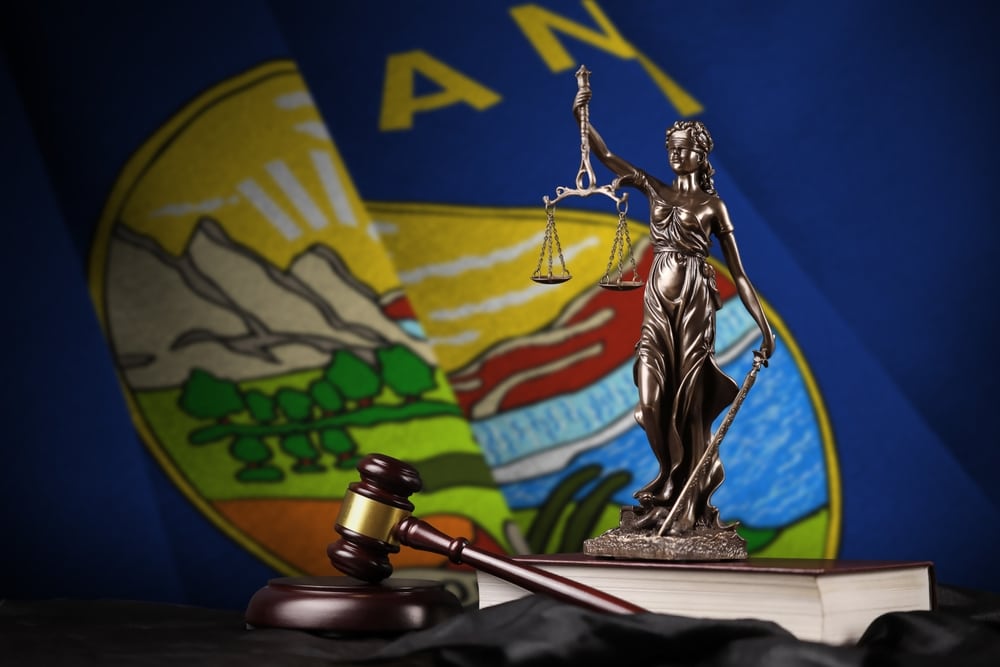Montana Bankruptcy Guide

Introduction
Montana’s unique geography, rural character, and economic patterns create special considerations for residents considering bankruptcy protection. From vast ranching operations to remote mountain communities, the state’s distinctive features directly impact how bankruptcy proceedings unfold. Understanding these Montana-specific elements proves crucial for successfully navigating the bankruptcy process.
The federal bankruptcy system operates through Montana’s dedicated bankruptcy court system, with locations strategically placed across the state to serve its widespread population. While federal law governs the basic bankruptcy framework, Montana’s state laws, particularly regarding property exemptions and residency requirements, significantly impact bankruptcy cases within the state.
Montana’s seasonal economy, dominated by agriculture, tourism, and natural resource industries, creates unique timing considerations for bankruptcy filings. The state’s extreme weather conditions and vast distances between communities can also affect court appearances and document filing requirements.
For many Montanans, particularly those involved in farming, ranching, or seasonal businesses, understanding how state-specific protections interact with federal bankruptcy law becomes essential for protecting their livelihoods. The state provides special considerations for agricultural operations, recognizing their vital role in Montana’s economy.
This guide aims to help Montana residents understand the state-specific aspects of bankruptcy while providing practical information about the process, requirements, and special considerations that apply within the state. Whether you’re a rancher in Eastern Montana or a business owner in Missoula, understanding these state-specific elements can significantly impact your bankruptcy experience.

State Bankruptcy Courts
The U.S. Bankruptcy Court for the District of Montana maintains its headquarters in Billings, with additional locations in Butte, Great Falls, and Missoula. This distributed court system helps serve Montana’s geographically dispersed population, though many proceedings now offer remote attendance options to accommodate the state’s vast distances and challenging weather conditions.
Each court location provides full bankruptcy services, including filing acceptance, creditor meetings, and hearings. The court’s website (www.mtb.uscourts.gov) offers comprehensive resources, local forms, and specific guidance for Montana filers. The electronic filing system allows attorneys and approved filers to submit documents remotely, particularly valuable given Montana’s geographic challenges.
Montana’s bankruptcy courts have developed specific procedures to address local needs, including flexible scheduling for agricultural operators during crucial farming seasons and accommodations for weather-related travel difficulties. These local rules and procedures reflect the practical realities of practicing bankruptcy law in Montana’s unique environment.
Montana Property Exemptions
Homestead Exemption
Montana provides a generous homestead exemption of $250,000 per household, reflecting the state’s commitment to helping residents maintain stable housing through financial difficulties. This protection extends to traditional homes, condominiums, and mobile homes, acknowledging the diverse housing needs across Montana’s urban and rural areas.
The state’s homestead protection includes different acreage allowances based on property location – up to one acre in urban areas and 160 acres in rural settings. This distinction recognizes the different land-use patterns across Montana’s varied geography and helps protect both city dwellers and rural residents appropriately.
To claim the homestead exemption, property owners must file a homestead declaration before any judgment or bankruptcy filing. This declaration must be properly recorded with the county where the property is located, and the protection extends to sale proceeds for 18 months following a property sale, providing important transition protection.
Personal Property Exemptions
Montana law provides specific exemptions for various categories of personal property, balancing the need to protect essential items while ensuring creditor interests. Vehicle equity protection extends to $4,000, helping ensure basic transportation remains available in a state where private vehicles often prove essential for daily life.
The state offers full protection for clothing and family photographs, recognizing their personal importance and minimal resale value. Household goods receive protection up to $4,500, while jewelry maintains a $600 exemption limit. Montana specifically protects one firearm up to $600 in value, reflecting the state’s hunting and outdoor traditions.
Montana’s personal property exemptions include practical considerations like protection for 12 months’ worth of food and fuel supplies. This provision acknowledges the state’s harsh winters and rural nature, where maintaining adequate supplies proves crucial for survival and self-sufficiency.
Wage Exemptions
Montana provides strong wage protection through exemptions that help ensure working residents maintain basic living standards during bankruptcy. The state protects the greater of 75% of disposable earnings or 30 times the federal minimum wage, providing significant income protection for working Montanans.
Enhanced protections exist for heads of household, recognizing their additional family responsibilities. The state also offers special protection for agricultural income, acknowledging the unique patterns and challenges of farming and ranching income, including its seasonal nature and weather dependencies.
These wage protections extend to various types of income, helping ensure Montanans can maintain basic living standards while addressing their debt challenges through bankruptcy. The protections apply to regular wages, commissions, and other forms of employment compensation.
Special Montana Considerations
State-Specific Requirements
Montana requires all bankruptcy filers to complete approved credit counseling from providers familiar with the state’s unique economic conditions and challenges. This requirement helps ensure filers understand both general bankruptcy principles and Montana-specific considerations that might affect their cases.
Residency requirements play a crucial role in Montana bankruptcies, particularly given the state’s significant seasonal workforce in industries like tourism and agriculture. Filers must establish proper residency to use Montana’s exemptions and take advantage of state-specific protections.
The state makes important distinctions between urban and rural property, particularly in exemption applications and property valuations. These distinctions reflect Montana’s diverse geography and development patterns, from dense city centers to remote agricultural operations.
Median Income Thresholds
Montana’s median income thresholds, which help determine Chapter 7 eligibility, reflect the state’s unique economic conditions. As of 2024, these thresholds stand at $56,482 for single persons, $71,954 for families of two, $82,674 for families of three, and $94,486 for families of four, with additions of $9,900 for each additional family member.
These thresholds consider Montana’s cost of living and economic patterns, including seasonal employment and agricultural income. The state’s bankruptcy courts understand the need to consider income patterns that may differ significantly from national norms, particularly in agricultural and tourism-dependent areas.
The median income calculations take special account of Montana’s unique economic features, including seasonal variation and rural economic patterns. This understanding helps ensure fair evaluation of bankruptcy eligibility for state residents.
Natural Resource Rights
Montana’s rich natural resources create unique considerations in bankruptcy proceedings. Mining claims, water rights, mineral rights, and timber rights often represent significant assets that require careful handling in bankruptcy cases. The state’s bankruptcy courts have developed specific expertise in addressing these complex property rights.
Water rights prove particularly crucial in Montana, where agricultural operations often depend on irrigation access. The bankruptcy courts work to ensure these vital rights receive appropriate protection while balancing creditor interests. Similar considerations apply to mineral rights and timber rights, which can significantly impact property values and future income potential.
The treatment of natural resource rights in bankruptcy requires careful coordination between federal bankruptcy law and Montana state law. Local expertise often proves essential for properly protecting these rights while ensuring fair treatment of all parties involved.
Conclusion
Successfully navigating bankruptcy in Montana requires understanding both federal bankruptcy law and state-specific considerations that can significantly impact case outcomes. From protecting agricultural operations to addressing natural resource rights, Montana’s unique characteristics create special circumstances that inform bankruptcy proceedings throughout the state.
The state’s bankruptcy system has evolved to address Montana’s distinctive challenges, including vast distances, severe weather conditions, and seasonal economic patterns. Understanding these adaptations helps residents make informed decisions about bankruptcy timing and strategy.
Montana’s generous exemptions and special protections for agricultural operations reflect the state’s commitment to helping residents maintain stability through financial difficulties. These protections prove particularly valuable for farming and ranching operations, which face unique challenges and seasonal considerations.
Working with professionals familiar with Montana’s specific bankruptcy landscape can significantly improve outcomes. These experts understand how to maximize state protections while navigating federal requirements, ensuring comprehensive protection for their clients’ interests.
Remember that while this guide provides an overview of Montana-specific bankruptcy considerations, each case presents unique circumstances requiring careful evaluation. Consulting with qualified bankruptcy professionals who understand Montana’s specific challenges and opportunities remains crucial for achieving optimal results.
The path through bankruptcy, while challenging, offers Montana residents an opportunity for a fresh financial start while protecting important assets and rights. Understanding state-specific elements helps ensure this fresh start provides a solid foundation for future financial stability.
